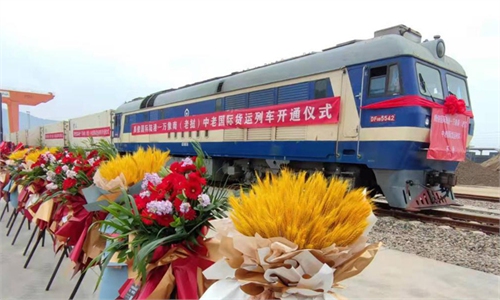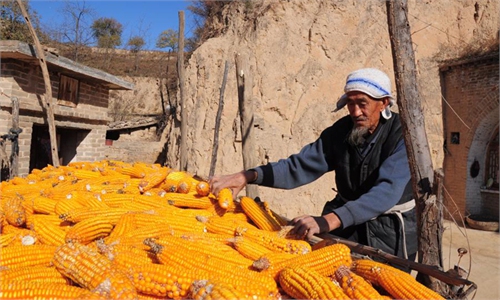ARTS / CULTURE & LEISURE
Discovery along China-Laos Railway: an ancient Yunnan village where everyone plays guitar

Laodabao village in Pu'er, Southwest China's Yunnan Province Photo: IC
As the 1,035-kilometer-long China-Laos Railway officially went into operation on Friday, the train, which connects Kumming in Southwest China's Yunnan Province and the Laos capital Vientiane, gives travelers the chance to not only look at breathtaking landscapes, but also observe the ancient and hidden villages that can be found alongside the railway.

The Lane Xang EMU train departs the China-Laos Railway Vientiane station in the Lao capital Vientiane on December 3, 2021. Photo: Xinhua
Laodabao is an ancient village located in the bucolic, green mountainous areas of Pu'er, Xishuangbanna Dai Autonomous Prefecture in Yunnan Province. The village has many claims to fame such as a protection base for national intangible cultural heritage, a successful poverty alleviation model through guitar performances and its history as a point of entry for many Christian missionaries.The village is covered with bright flowers and phoenix-tailed bamboo bushes. A majority of buildings are diaojiaolou, homes built on stilts along the riverbank, next to which stand lines of banana trees.
Fresh calabashes can be seen lying in piles in the yards outside people's homes, while handicraft calabashes hang from the windows or are used as road lamps.
The village is one of the main living areas of the country's Lahu ethnic minority. The village was nominated in 2017 as the protection base of the national intangible cultural heritage named Mupamipa, an epic telling of the history of the Lahu people.
The calabash ornaments that appear in every household of the village come right from the folklore, which tells how "people in fact come from a calabash." In Laodabao village, calabashes are a totem.
Another standout in this village is the guitar. Today many folk songs contain lyrics in both Putonghua (standard Chinese) and the ethnic Lahu language and are sung by a chorus with guitar handling the music.
In 2013, when the idea of targeted poverty alleviation was brought onto the table within the country, Laodabao became one of the listed villages that needed help. The village didn't have electricity or paved roads before that year, which was also when the government decided to introduce this guitar folk music town to the world to increase villagers' earnings.
In June 2013, villagers in Laodabao established an art and performance company with a total of 200 performers from the village. Shortly after the establishment of the company, they began a world tour to perform in places such as Beijing, Shanghai and cities in Japan and Greece over the next few years.
The origin of these guitar performances, the locals say, came from a Christian missionary's visit to the village in the early 20th century when Myanmar was still a British colony. At the time, Western missionaries would sometimes cross the border between Myanmar and China and enter Yunnan Province.
To spread Christianity, one missionary decided to teach guitar as a way to cultivate the interest of villagers. After that people in the village who loved singing and dancing add the guitar to their repertoire, mixing modern music with their own traditional folk music.
Global Times



